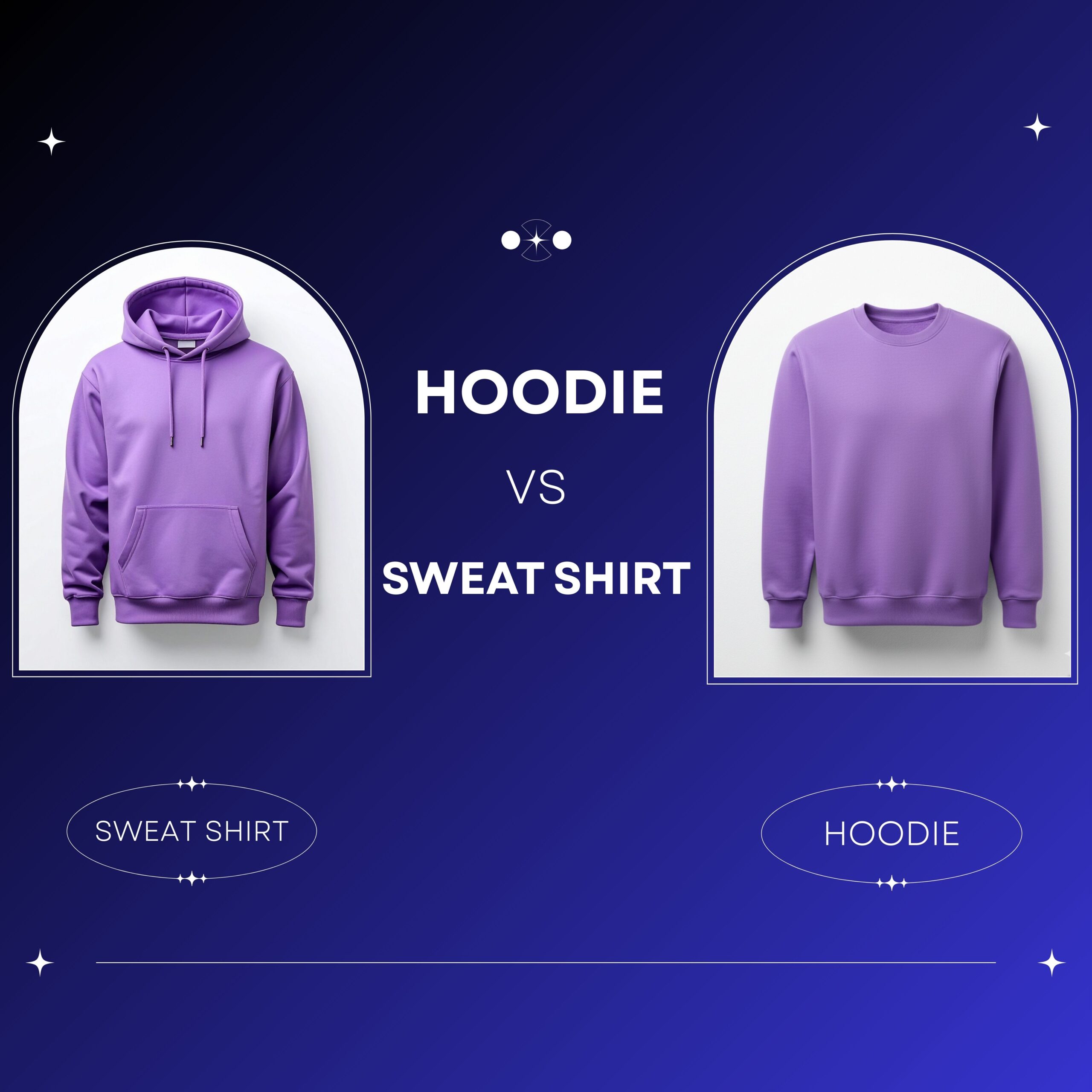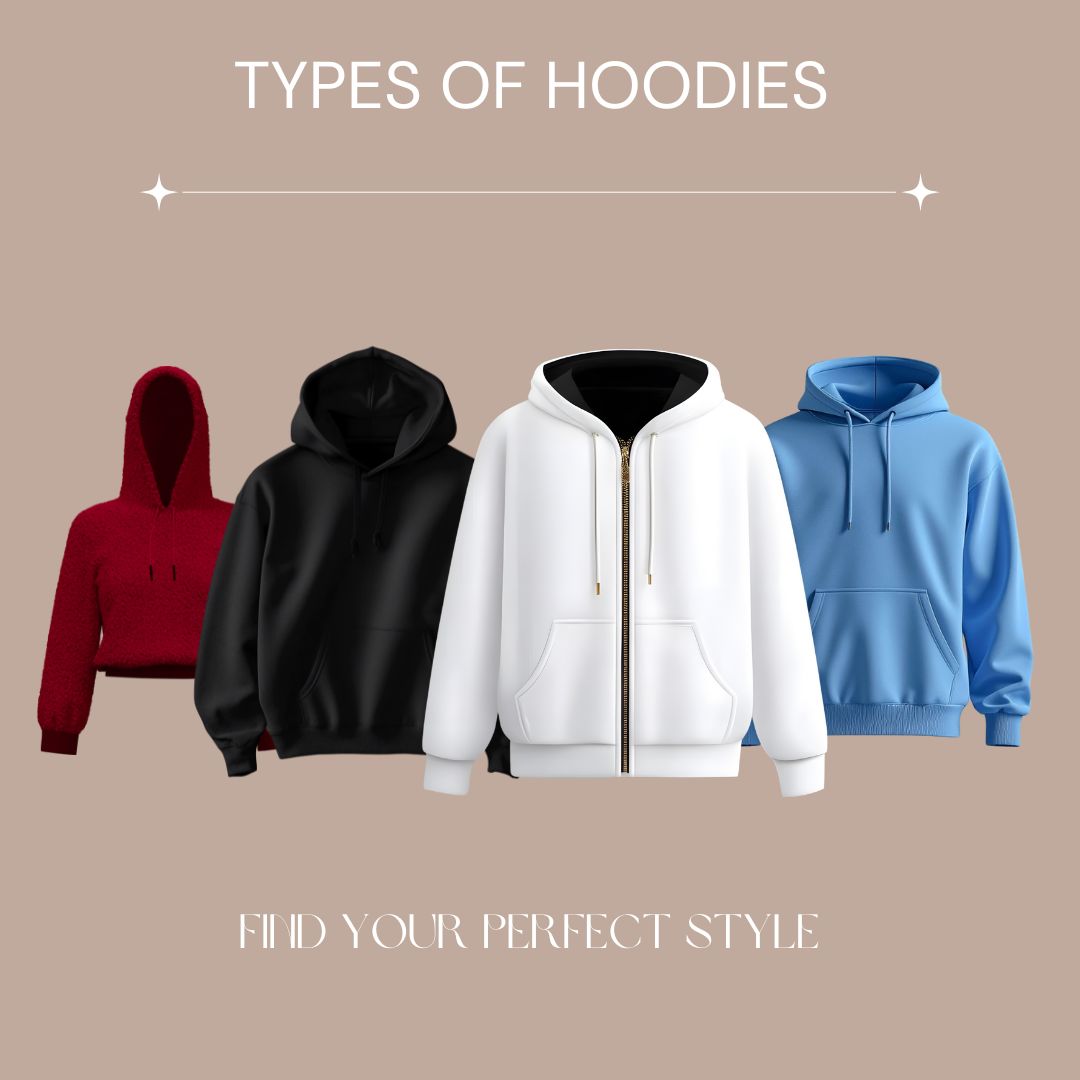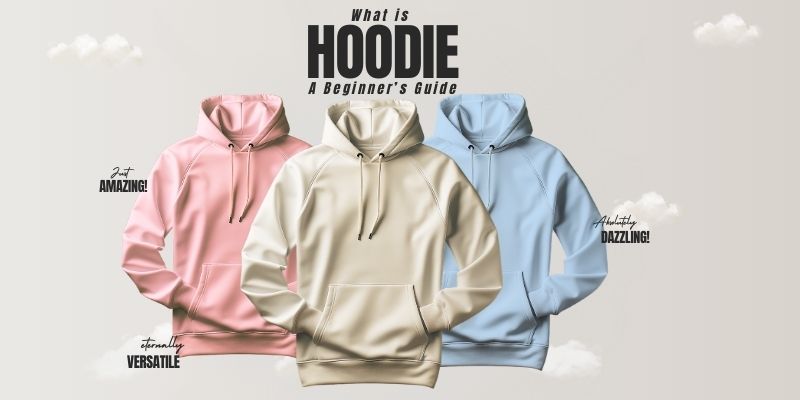Standing in the clothing aisle, staring at rows of similar-looking garments, you might wonder: what exactly makes a hoodie different from a regular sweatshirt? With so many styles, materials, and fits available, choosing the right quality hoodies can feel overwhelming, especially when you’re not sure what to look for or how much to spend.
The confusion deepens when you realize that not all hoodies are created equal. Some shrink after one wash, others lose their shape quickly, and many simply don’t provide the comfort and durability you expect. This quality hoodies guide will walk you through everything you need to know about hoodies, from basic definitions to expert buying tips, ensuring you make informed decisions and find the perfect hoodie for your lifestyle and budget.
What is a Hoodie Understanding the Basics
A hoodie is a type of sweatshirt featuring a built in hood with drawstrings and typically includes a large front pocket, known as a kangaroo pocket. The hoodie definition extends beyond just having a hood. It represents a specific style of casual wear that combines comfort, functionality, and versatility. Originally designed for athletes and laborers working in cold conditions, hoodies have evolved into one of the most popular casual garments worldwide, transcending age, gender, and social boundaries.
The key distinguishing features of a hoodie include the adjustable hood with drawstring closure, ribbed cuffs and hem, and the characteristic relaxed fit that allows for easy layering. Unlike a regular sweatshirt, which lacks the hood component, hoodies provide additional warmth and protection for the head and neck area. Modern hoodies come in various styles, from the classic pullover design to zip up versions, each offering different benefits for different occasions and personal preferences.
The Anatomy of a Hoodie Key Components
Understanding hoodie construction helps you identify quality and choose the right style for your needs. The hood itself should be proportional to the garment and your body size, with a drawstring that allows for comfortable adjustment without being too tight or loose. Quality hoodies feature reinforced stitching around the hood attachment points, preventing tears and ensuring longevity even with frequent wear.
The kangaroo pocket serves both functional and design purposes, providing storage space for small items while contributing to the hoodie’s characteristic silhouette. Premium hoodies often include interior media pockets or pen holders within the main pocket. The ribbed cuffs and hem help maintain the garment’s shape while providing a secure, comfortable fit that doesn’t ride up during movement.
Hoodie vs Sweatshirt What’s the Difference

While often used interchangeably, hoodies and sweatshirts have distinct differences that affect both style and functionality. A sweatshirt is the broader category, referring to any pullover garment made from soft, warm fabric designed for comfort and casual wear. A hoodie is specifically a type of sweatshirt that includes the hood feature, making it more versatile for varying weather conditions.
The presence of a hood significantly impacts the garment’s versatility and styling options. Hoodies can transition from indoor comfort wear to outdoor protection, while regular sweatshirts primarily serve indoor or mild weather purposes. Additionally, hoodies often feature the signature front pocket design, whereas sweatshirts may have side pockets, no pockets, or different pocket configurations entirely.
Popular Hoodie Styles and Variations
Modern hoodie design has expanded far beyond the classic pullover style, offering numerous variations to suit different preferences and occasions. Pullover hoodies maintain the traditional aesthetic and provide better insulation since there’s no front opening. Zip up hoodies offer convenience for layering and temperature regulation, making them ideal for transitional weather or when you need to quickly adjust your warmth level.
Specialty styles include cropped hoodies for a trendy, fitted look, oversized hoodies for maximum comfort and contemporary fashion appeal, and athletic hoodies designed with moisture wicking properties for active wear. Each style serves different purposes and appeals to various fashion preferences, allowing you to choose based on your intended use and personal style goals.
Hoodie Materials and Fabric Guide for Quality Hoodies
Understanding hoodie fabrics is crucial for making smart purchasing decisions and ensuring your investment provides long term satisfaction. The material determines everything from comfort and durability to care requirements and seasonal appropriateness. Cotton remains the most popular hoodie fabric due to its natural breathability, softness, and easy care requirements, making it ideal for everyday wear and sensitive skin types.
Fabric weight significantly impacts both comfort and durability, typically measured in ounces per square yard (GSM). Lightweight hoodies (7 to 9 oz) work well for layering and mild weather, while heavy weight options (12 plus oz) provide superior warmth and longevity. Mid weight hoodies (10 to 11 oz) offer the best balance for most users, providing adequate warmth without excessive bulk while maintaining durability through regular washing and wear.
Cotton Hoodies Benefits and Considerations
Cotton hoodies represent the gold standard for comfort and breathability, offering natural temperature regulation and moisture absorption that keeps you comfortable throughout the day. Pure cotton hoodies feel soft against the skin and improve with age, developing a lived in comfort that synthetic materials rarely achieve. Cotton also holds dyes well, maintaining color vibrancy through multiple washes when properly cared for.
However, pure cotton hoodies can shrink if not pre shrunk or properly cared for, and they may lose shape over time without proper fabric construction. Cotton also wrinkles more easily than synthetic blends and may take longer to dry after washing. Despite these minor drawbacks, cotton remains the preferred choice for most hoodie enthusiasts due to its overall comfort and natural properties.
Synthetic Blends and Performance Fabrics
Polyester cotton blends combine the best attributes of both materials, offering cotton’s comfort with polyester’s durability and shape retention. Common blend ratios include 80/20 cotton polyester for maximum softness with some durability benefits, and 50/50 blends for equal comfort and performance characteristics. These blends resist shrinking better than pure cotton while maintaining much of the natural feel and breathability.
Performance fabrics incorporate moisture wicking technology, making them ideal for active lifestyles or layering during workouts. Some premium hoodies feature bamboo fiber blends for enhanced antimicrobial properties and ultra soft texture, while others include elastane for improved stretch and recovery. When choosing synthetic blends, consider your primary use case and prioritize the features most important to your lifestyle.
Premium Materials Fleece and Specialty Linings
French terry and fleece lined hoodies provide superior warmth and comfort, making them excellent choices for colder climates or anyone who runs cold. French terry features loops on the interior that trap warm air while maintaining breathability, creating an ideal microclimate for comfort. This construction method results in a lighter weight garment that still provides excellent insulation properties.
Sherpa lined hoodies represent the premium end of hoodie warmth, featuring a plush, wool like lining that provides exceptional insulation and luxury comfort. These hoodies work exceptionally well as outer layers or for extremely cold conditions. While heavier and more expensive than standard options, sherpa lined hoodies offer unmatched warmth and a premium feel that justifies the investment for serious hoodie enthusiasts.
Types of Hoodies Finding Your Perfect Style

Choosing between different hoodie styles depends on your lifestyle, fashion preferences, and intended use cases. Each style offers unique benefits and styling possibilities, making it important to understand these differences before making a purchase decision. Your choice between pullover and zip up styles will significantly impact both functionality and aesthetic appeal, affecting how you integrate the hoodie into your wardrobe.
Style preferences often evolve based on practical needs and fashion trends, but understanding the fundamental differences helps ensure your choice aligns with long term satisfaction. Consider how you plan to wear your hoodie most often as a standalone piece, for layering, or for specific activities as this will guide you toward the most suitable style option.
Pullover vs Zip Up Hoodies Making the Right Choice
Pullover hoodies offer the classic hoodie aesthetic with uninterrupted front design that many consider more stylish and streamlined. They provide better insulation since there’s no front opening where cold air can enter, making them ideal for colder weather or anyone who prioritizes warmth. Pullover designs also tend to be more durable since there’s no zipper mechanism that can break or malfunction over time.
Zip up hoodies excel in versatility and convenience, allowing for easy temperature regulation and layering options. You can wear them fully zipped for maximum warmth, partially unzipped for ventilation, or completely open as a light jacket over other garments. This flexibility makes zip up hoodies particularly practical for transitional weather, commuting, or situations where you need to quickly adjust your comfort level throughout the day.
Specialty Hoodie Styles for Different Occasions
Oversized hoodies have become increasingly popular for their relaxed, comfortable fit and contemporary fashion appeal. These styles work excellently for layering, lounging, or creating casual street style looks that prioritize comfort without sacrificing style. Oversized fits also accommodate various body types comfortably and allow for unrestricted movement during daily activities.
Cropped hoodies offer a more fitted, fashion forward option that pairs well with high waisted bottoms for a balanced silhouette. Athletic hoodies incorporate performance features like moisture wicking properties, strategic ventilation, and ergonomic design elements that support active lifestyles while maintaining the hoodie’s casual aesthetic appeal.
Fit Types Understanding Hoodie Silhouettes
Understanding different fit types helps you choose a hoodie that flatters your body type and meets your comfort preferences. Regular fit hoodies provide a balanced silhouette that’s neither too tight nor too loose, offering versatility for most body types and occasions. This classic fit works well for layering and provides a timeless look that won’t go out of style.
Slim fit hoodies create a more tailored appearance while maintaining comfort, ideal for those who prefer a more structured look or plan to wear the hoodie in slightly more formal casual settings. Relaxed fits prioritize maximum comfort and freedom of movement, making them excellent choices for loungewear, sleep wear, or anyone who prefers a roomier feel in their clothing.
How to Choose the Right Hoodie Your Complete Buying Guide
Selecting the perfect hoodie requires balancing multiple factors including fit, quality, intended use, and budget considerations. The key to satisfaction lies in understanding your specific needs and matching them with appropriate hoodie characteristics. Consider how often you’ll wear the hoodie, in what contexts, and what features matter most to your comfort and style preferences.
Quality indicators extend beyond just fabric choice to include construction details, hardware quality, and overall design execution. A well made hoodie will maintain its shape, color, and comfort through numerous washes and extended wear, making the initial investment worthwhile. Understanding these quality markers helps you distinguish between truly good hoodies and those that may disappoint over time.
Finding Your Perfect Hoodie Size and Fit
Proper hoodie sizing involves more than just choosing your usual size, as different brands and styles can vary significantly in their sizing standards. Start by measuring your chest, waist, and preferred hoodie length, then compare these measurements to the brand’s specific size chart rather than relying solely on S M L designations. Pay attention to sleeve length, as hoodie sleeves should typically end at your wrist bone for optimal comfort and appearance.
Consider your intended use when selecting size and fit preferences:
- Layering Choose a size that accommodates underlayers without feeling restrictive
• Standalone wear Select a size that provides comfortable room without excessive bagginess
• Athletic activities Opt for fits that allow full range of motion without fabric bunching
• Fashion purposes Choose based on desired silhouette and current style preferences
Quality Indicators What Makes a Good Hoodie
Examining construction details reveals much about hoodie quality and expected longevity. Look for reinforced stitching at stress points, particularly where the hood attaches to the body and at pocket corners. Quality hoodies feature consistent, tight stitching with no loose threads or gaps that could indicate poor manufacturing standards.
Hardware quality significantly impacts user experience and durability:
• Drawstrings Should be substantial enough to withstand regular use without fraying
• Eyelets Metal grommets last longer than fabric holes and prevent tearing
• Zippers YKK or comparable quality zippers operate smoothly and resist snagging
• Seam construction Flat fell or properly finished seams prevent unraveling and improve comfort
Color Selection and Style Considerations
Color choice impacts both versatility and longevity of your hoodie investment. Neutral colors like gray, black, navy, and white offer maximum versatility and tend to show wear less obviously than lighter or more vibrant colors. These classic options coordinate easily with most wardrobe items and remain stylish across changing fashion trends.
Consider your lifestyle and care routine when selecting colors, as darker colors hide stains better while lighter colors may require more frequent washing. Bold colors and graphics can express personality but may limit styling options or date the garment more quickly than classic alternatives.
Styling Your Hoodie Tips for Different Occasions
Modern hoodie styling extends far beyond basic casual wear, offering numerous opportunities to create polished, intentional looks suitable for various occasions. Understanding layering techniques and coordination principles helps you maximize your hoodie’s versatility while maintaining appropriate style levels for different settings. The key lies in balancing the hoodie’s inherent casualness with other garment choices that elevate the overall look.
Contemporary fashion embraces hoodies in contexts previously considered inappropriate, but success requires thoughtful styling and attention to fit, condition, and coordination. A well chosen hoodie can serve as a comfortable alternative to traditional casual wear while providing the relaxed aesthetic many people prefer in their daily wardrobes.
Casual Everyday Styling Approaches
For effortless daily wear, pair your hoodie with well fitted jeans or casual trousers in complementary colors. Dark jeans work particularly well with most hoodie colors and create a balanced casual look suitable for errands, casual meetups, or relaxed work environments. Complete the look with clean sneakers or casual boots that coordinate with your hoodie’s color palette.
Seasonal styling considerations help you make the most of your hoodie throughout the year. In warmer weather, choose lighter weight hoodies in breathable fabrics and pair with shorts or lighter pants. During colder months, layer your hoodie under jackets or over thermal wear for added warmth while maintaining the comfortable fit you love.
Layering Techniques for Enhanced Style
Effective hoodie layering creates visual interest while providing practical temperature regulation throughout changing conditions. Layer a hoodie over a collared shirt with the collar visible for a preppy casual look that works well for casual Friday or weekend activities. This technique adds structure to the outfit while maintaining the hoodie’s comfort benefits.
For colder weather, layer your hoodie under a denim jacket, bomber jacket, or casual blazer for a contemporary look that provides multiple styling options. You can adjust layers throughout the day based on temperature changes while maintaining a cohesive appearance that transitions well between indoor and outdoor environments.
Seasonal Hoodie Styling Strategies
Spring and summer hoodie styling focuses on lighter fabrics and colors that complement the season’s energy. Choose hoodies in pastel tones or classic neutrals, and pair them with lighter colored bottoms for a fresh, seasonal appearance. Lightweight cotton or cotton blend hoodies work best during warmer months, providing comfort without overheating.
Fall and winter styling embraces richer colors and heavier fabrics that provide both warmth and seasonal appropriateness. Deep jewel tones, classic grays, and rich browns work excellently during cooler months. Layer heavier hoodies with appropriate outerwear and choose darker color palettes that coordinate with typical fall and winter wardrobe pieces.
Conclusion
Understanding what makes a great hoodie empowers you to make informed decisions that provide long term satisfaction and value. From fabric selection and fit considerations to styling versatility and quality indicators, the right hoodie becomes an invaluable wardrobe staple that serves multiple purposes across various occasions and seasons. Quality hoodies represent an investment in comfort, style, and versatility that pays dividends through years of dependable wear. The knowledge gained from understanding hoodie fundamentals ensures every purchase decision aligns with your specific needs and lifestyle requirements.
Whether you choose a classic pullover, convenient zip up, or specialty style, the perfect hoodie combines comfort, durability, and style in a way that few other garments can match. By considering your specific needs, lifestyle requirements, and quality standards, you’ll find a hoodie that not only meets your immediate needs but continues to provide satisfaction and versatility for years to come. The hoodie’s enduring popularity stems from its unique ability to adapt to changing fashion trends while maintaining its core appeal unmatched comfort and effortless style. Investing in quality hoodies that meet these criteria ensures you’ll have reliable, comfortable, and stylish options for any casual occasion that arises.
FAQs
Q. What is the difference between a hoodie and a sweatshirt?
A sweatshirt is a pullover made from soft fabric, while a hoodie is a sweatshirt with a hood and often a front pocket, providing extra warmth and versatility.
Q. Are cotton hoodies better than polyester hoodies?
Cotton hoodies are softer, breathable, and comfortable for daily wear, while polyester hoodies are more durable, wrinkle resistant, and maintain their shape better.
Q. How do I prevent my hoodie from shrinking?
Wash your hoodie in cold water, avoid high heat drying, and choose pre shrunk fabrics to minimize shrinkage.
Q. Which hoodie style is best for layering?
Zip up hoodies are the best choice for layering since you can adjust them easily over other clothing.
Q. How can I style a hoodie for a smart casual look?
Pair your hoodie with fitted jeans or chinos, layer it under a blazer or denim jacket, and complete the outfit with clean sneakers or boots.


Leave a Reply